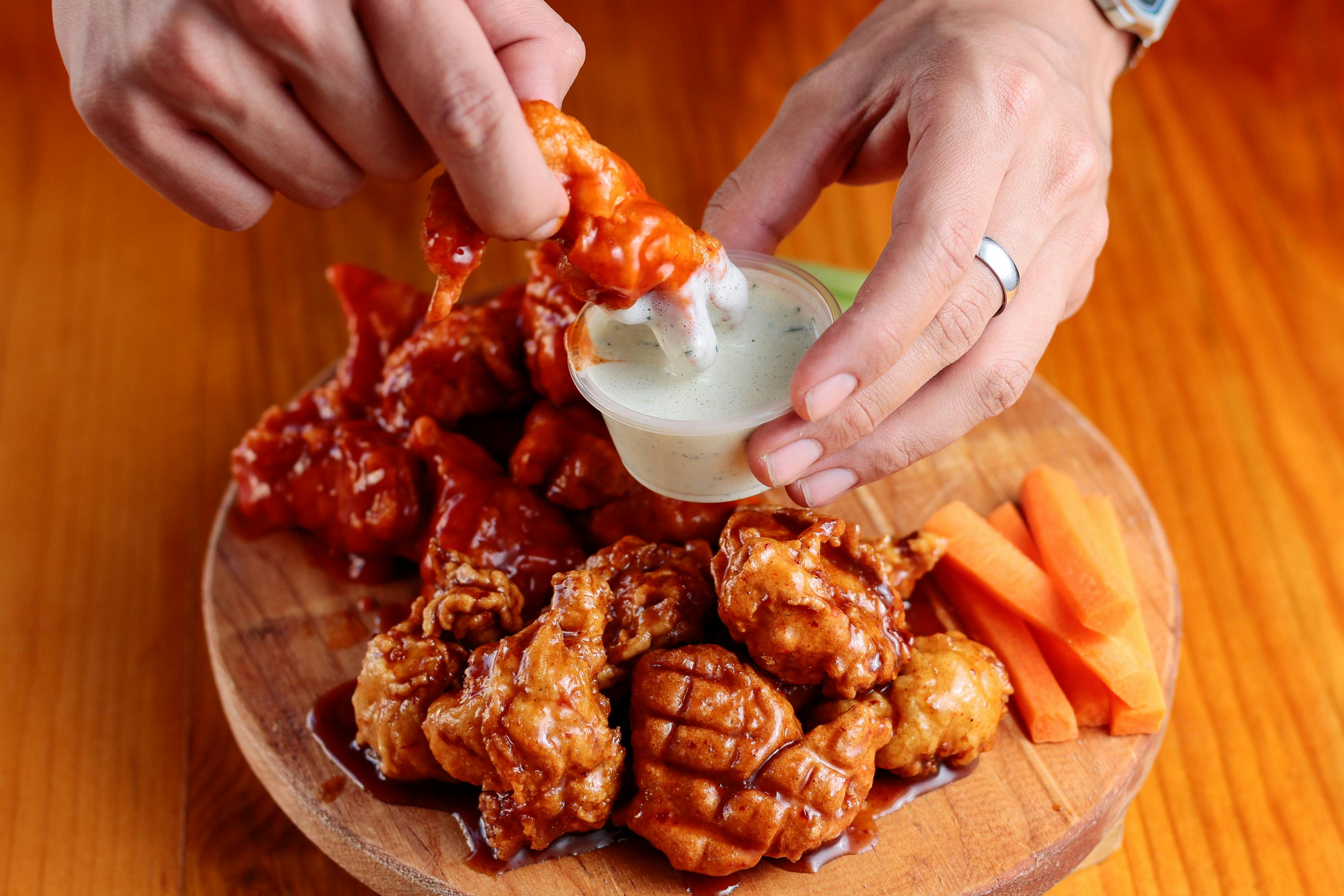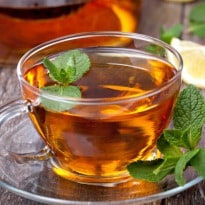BREWING TEAQ: How can I make the perfect cup of tea?A: Sebastian Beckwith, co-founder of In Pursuit of Tea, explains how best to brew your leaves:
1. Fill an electric or stovetop kettle with water, ideally filtered.2. Heat water (see below for temperature recommendations).3. Pour 1/2 cup hot water into a 10- to 12-ounce teapot and swish to warm pot up, about 5 seconds; discard water.4. Spoon 4 grams tea leaves (1 to 3 rounded teaspoons, depending on density of leaves) directly into teapot or into a basket strainer inside pot.5. Fill teapot with hot water and let steep (see below for brewing times).6. When tea is ready, decant it or remove basket strainer to stop the steeping.
HEAT & STEEPAll times are for 12 ounces of water with 4 grams of leaves.+ Black tea: 3 minutes; 205 degrees (just off a boil)+ Green tea: 2 minutes; 180 degrees (when you see steam)+ Tisane: 3 to 4 minutes; 205 degrees (just off a boil)+ White tea: 2 minutes; 180 degrees (when you see steam)+ Pu-erh tea: 3 minutes; 205 degrees (just off a boil)+ Oolong tea: 2 minutes; 190 to 205 degrees (just off a boil)
CHANGING HYDRANGEAS' COLORQ: Can I change the color of hydrangeas?A: You can switch the color of blue mophead hydrangeas (Hydrangea macrophylla) by altering the soil's pH level, says Kim Reiss of the Missouri Botanical Garden, in Saint Louis. Do so with either garden lime or soil acidifier (such as aluminum sulfate), both available at the Home Depot. Lime, which is a base (and has a high pH) will turn flowers pink; aluminum sulfate, an acid (with a low pH), will turn flowers blue.
PREVENTING CLOUDY GLASSESQ: Why do my glasses look cloudy right out of the dishwasher?A: A common reason for cloudy glass is hard water, but there may be another culprit: minuscule, irreversible scratches, which can result from a reaction between glass composition, water and detergent, says Beth Robinson, brand experience manager at KitchenAid. If the film remains after you rub the glass with distilled white vinegar, which removes hard water's calcium and magnesium buildup, it's likely due to this fine etching. If not, you likely have hard water; add a rinse aid (such as Finish) to the dishwasher's dispenser.
USING A GRILL'S INDIRECT ZONEQ: What does an indirect zone on a grill do? Does it only work with charcoal grills?A: An indirect zone is one without coals right beneath it. Its medium-low temperature (with the lid closed) lets you cook large items - such as a whole chicken or a rack of ribs - all the way through without blackening the outside. To create one on a charcoal grill, build the fire as you normally would; then, once the coals are hot, use tongs to push them to one side. The side without coals will be your indirect zone. With a gas grill with two or more knobs, turn on one knob. Use the unheated area to cook on.(Questions should be addressed to Ask Martha, care of Letters Department, Martha Stewart Living, 601 W. 26th St., 9th floor, New York, N.Y. 10001. Questions may also be sent by email to: mslletters@marthastewart.com. Please include your name, address and daytime telephone number.)(Questions of general interest will be answered in this column; Martha Stewart regrets that unpublished letters cannot be answered individually. For more information on the topics covered in the Ask Martha column, visit www.marthastewart.com.)
© 2014 Martha Stewart Living Omnimedia Inc.© 2014 New York Times News Service
Photo Source: Thinkstock
1. Fill an electric or stovetop kettle with water, ideally filtered.2. Heat water (see below for temperature recommendations).3. Pour 1/2 cup hot water into a 10- to 12-ounce teapot and swish to warm pot up, about 5 seconds; discard water.4. Spoon 4 grams tea leaves (1 to 3 rounded teaspoons, depending on density of leaves) directly into teapot or into a basket strainer inside pot.5. Fill teapot with hot water and let steep (see below for brewing times).6. When tea is ready, decant it or remove basket strainer to stop the steeping.
HEAT & STEEPAll times are for 12 ounces of water with 4 grams of leaves.+ Black tea: 3 minutes; 205 degrees (just off a boil)+ Green tea: 2 minutes; 180 degrees (when you see steam)+ Tisane: 3 to 4 minutes; 205 degrees (just off a boil)+ White tea: 2 minutes; 180 degrees (when you see steam)+ Pu-erh tea: 3 minutes; 205 degrees (just off a boil)+ Oolong tea: 2 minutes; 190 to 205 degrees (just off a boil)
CHANGING HYDRANGEAS' COLORQ: Can I change the color of hydrangeas?A: You can switch the color of blue mophead hydrangeas (Hydrangea macrophylla) by altering the soil's pH level, says Kim Reiss of the Missouri Botanical Garden, in Saint Louis. Do so with either garden lime or soil acidifier (such as aluminum sulfate), both available at the Home Depot. Lime, which is a base (and has a high pH) will turn flowers pink; aluminum sulfate, an acid (with a low pH), will turn flowers blue.
PREVENTING CLOUDY GLASSESQ: Why do my glasses look cloudy right out of the dishwasher?A: A common reason for cloudy glass is hard water, but there may be another culprit: minuscule, irreversible scratches, which can result from a reaction between glass composition, water and detergent, says Beth Robinson, brand experience manager at KitchenAid. If the film remains after you rub the glass with distilled white vinegar, which removes hard water's calcium and magnesium buildup, it's likely due to this fine etching. If not, you likely have hard water; add a rinse aid (such as Finish) to the dishwasher's dispenser.
USING A GRILL'S INDIRECT ZONEQ: What does an indirect zone on a grill do? Does it only work with charcoal grills?A: An indirect zone is one without coals right beneath it. Its medium-low temperature (with the lid closed) lets you cook large items - such as a whole chicken or a rack of ribs - all the way through without blackening the outside. To create one on a charcoal grill, build the fire as you normally would; then, once the coals are hot, use tongs to push them to one side. The side without coals will be your indirect zone. With a gas grill with two or more knobs, turn on one knob. Use the unheated area to cook on.(Questions should be addressed to Ask Martha, care of Letters Department, Martha Stewart Living, 601 W. 26th St., 9th floor, New York, N.Y. 10001. Questions may also be sent by email to: mslletters@marthastewart.com. Please include your name, address and daytime telephone number.)(Questions of general interest will be answered in this column; Martha Stewart regrets that unpublished letters cannot be answered individually. For more information on the topics covered in the Ask Martha column, visit www.marthastewart.com.)
© 2014 Martha Stewart Living Omnimedia Inc.© 2014 New York Times News Service
Photo Source: Thinkstock
Advertisement








